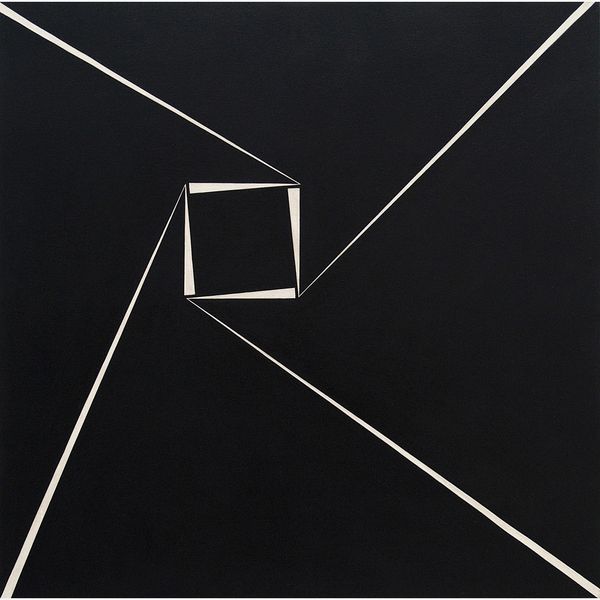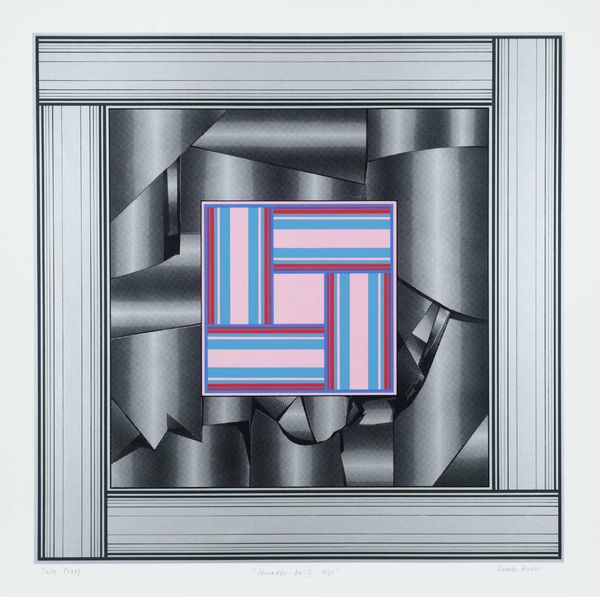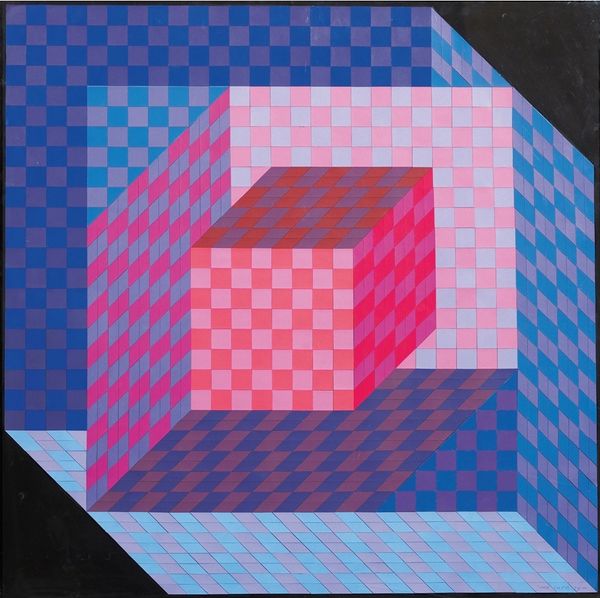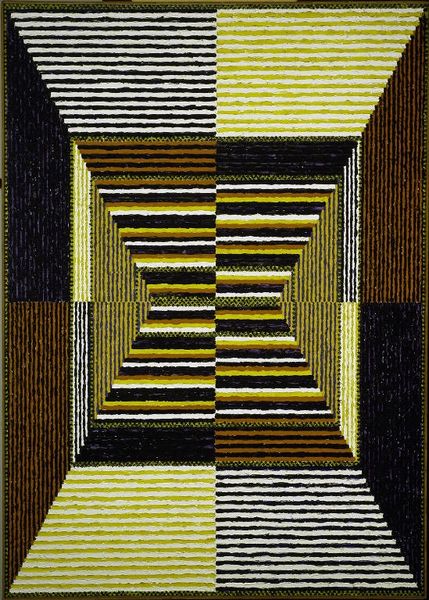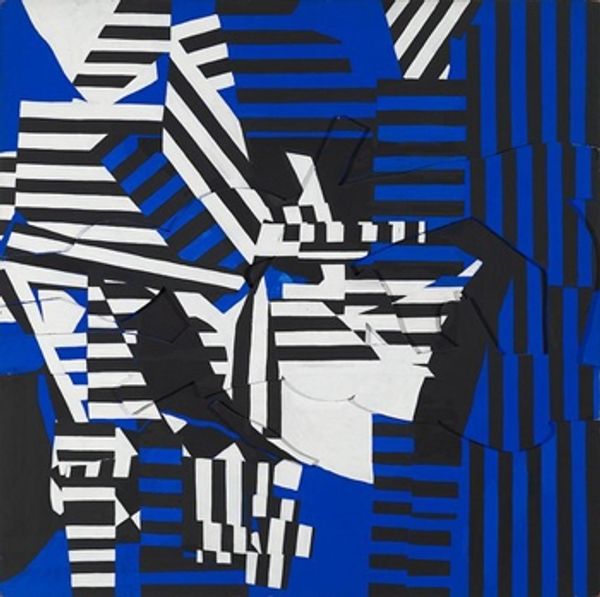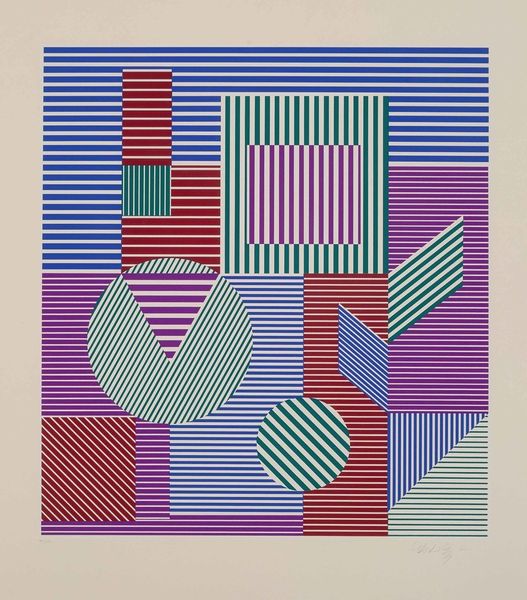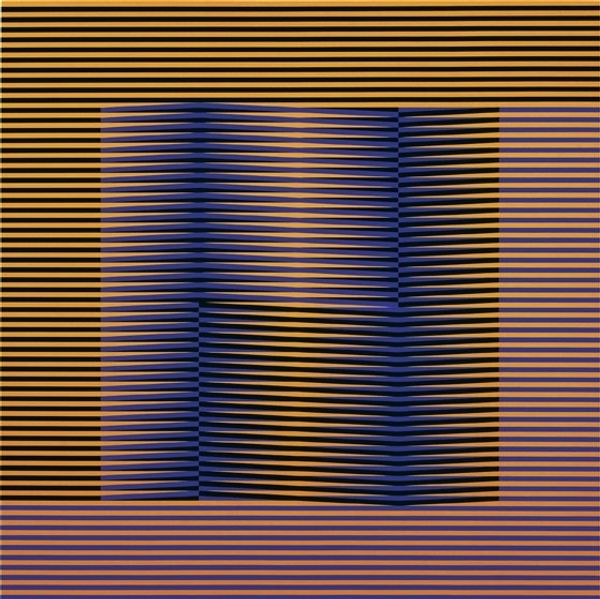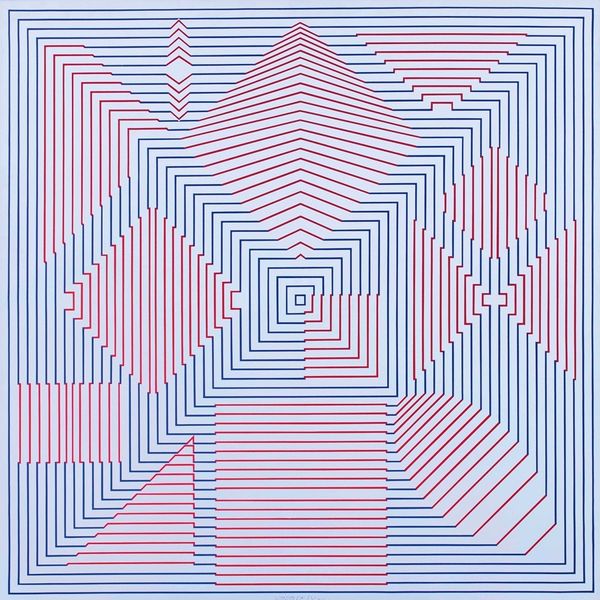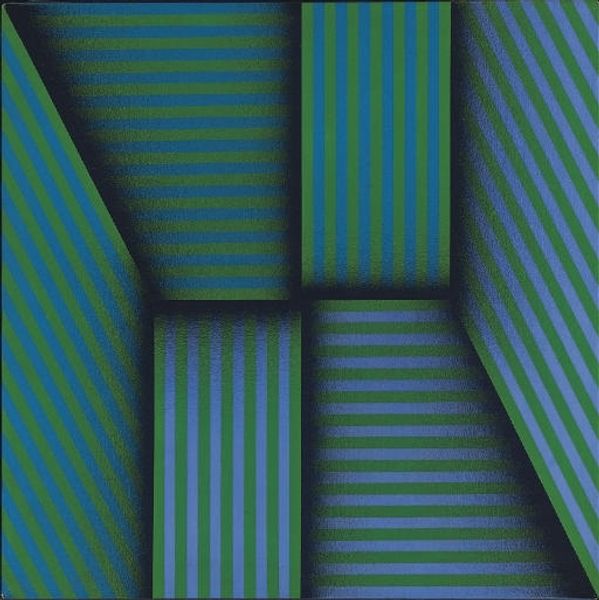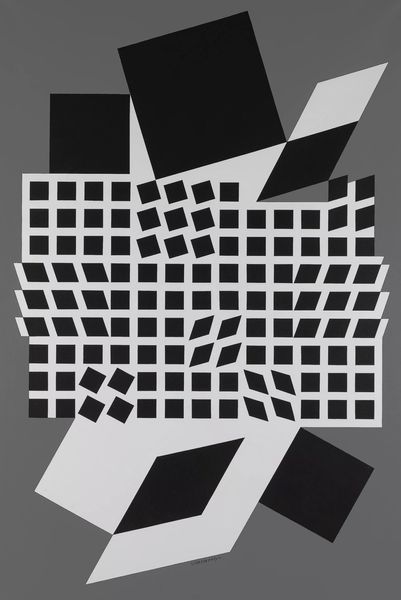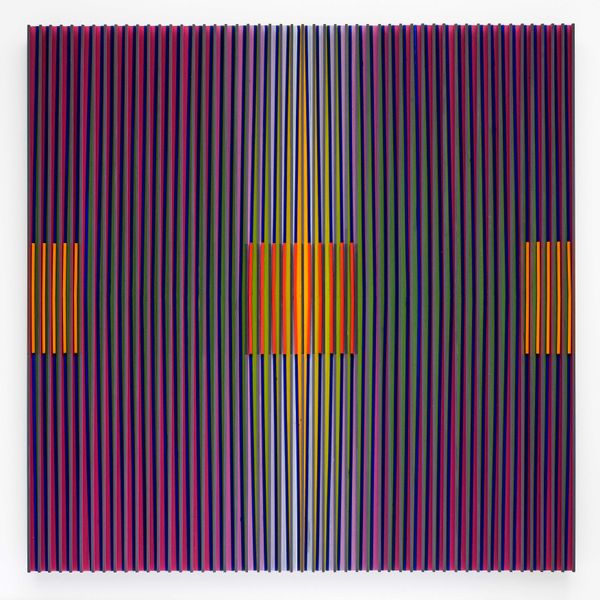
acrylic-paint
#
op-art
#
pattern
#
acrylic-paint
#
abstract
#
geometric pattern
#
abstract pattern
#
geometric
#
line
#
monochrome
Copyright: Omar Rayo,Fair Use
Curator: So precise. It feels almost engineered, but then there's that flicker of off-kilter rhythm that really gets under your skin. Editor: I see exactly what you mean! "O.V.N.I." by Omar Rayo from 1967. It’s executed in acrylic paint, which feels so key to the crispness of those lines. It's the layering of labor, really, meticulous preparation leading to this illusion. Curator: Illusion is exactly the word! The more I look at it, the more I feel a slight sense of disorientation, almost a kind of blissful vertigo. You know, that slightly spacey sensation when a familiar perspective suddenly shifts. Editor: It's the geometry playing tricks, right? He uses a stark monochrome palette punctuated only by a striking blue square. It's a simple element, really, but somehow charges the whole piece with, well, visual electricity! I wonder about his process. Did he pre-plan this rigorously or let the medium guide him? Curator: Rayo had this way of bending space and time with his intaglio techniques—creating such stark geometry while making it breathe. The lines are perfectly clean, yes, but then it pulls you into something much more ethereal. I imagine he saw these clean, architectural lines dancing, evolving beyond the medium. Editor: Absolutely. It really challenges the boundary between Op Art and pure geometric abstraction. I’m also thinking about the ‘60s when this piece was created. How do the rigid structures interact with the social anxieties of the time? Curator: I suppose, beyond a feeling of pure optic intrigue, the artist evokes a sense of quiet observation. Or perhaps he just allows us a quiet, hypnotic space for the viewer to find their own sense of calm, of controlled chaos, within it. Editor: Absolutely! In the end, this piece prompts some thoughts around the boundaries between craftsmanship and calculated effects; I guess they blend to create what is called "art".
Comments
No comments
Be the first to comment and join the conversation on the ultimate creative platform.
